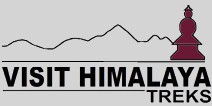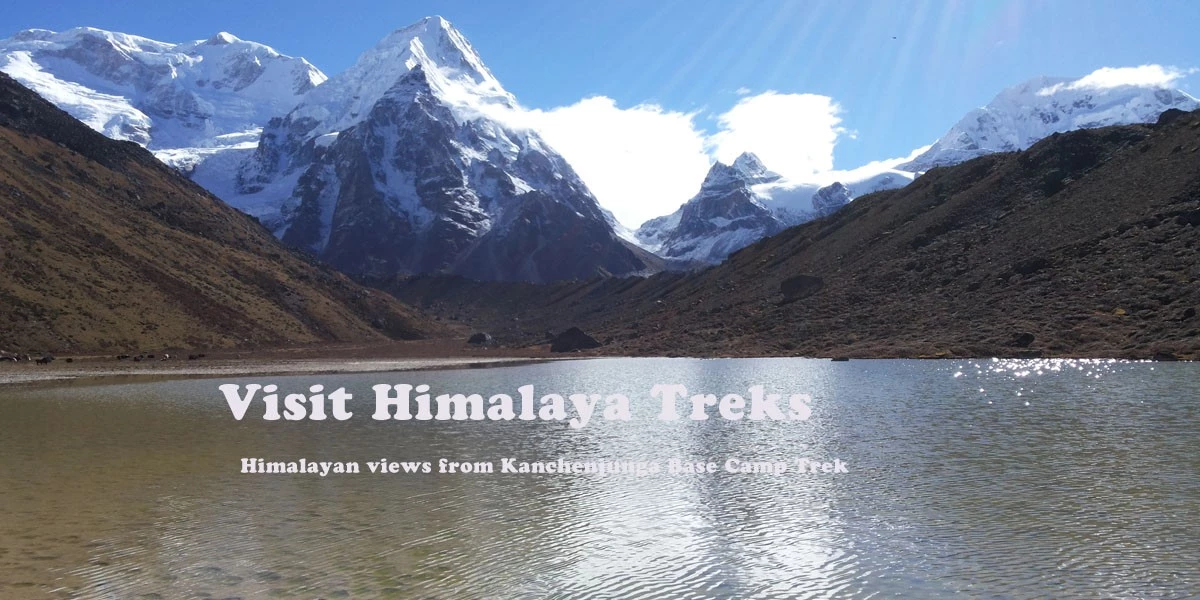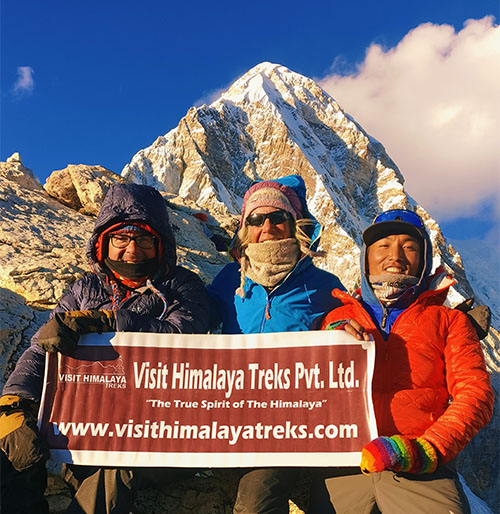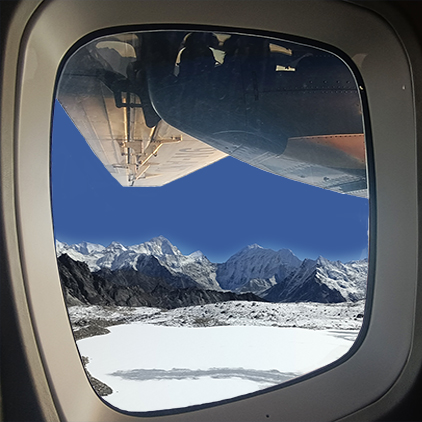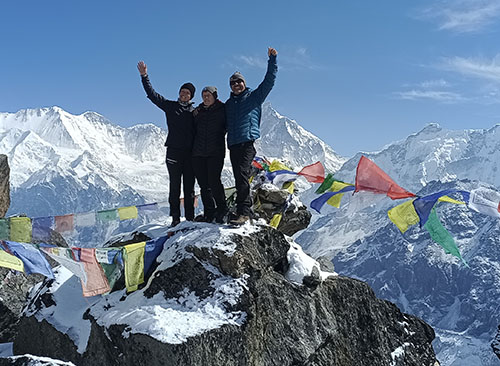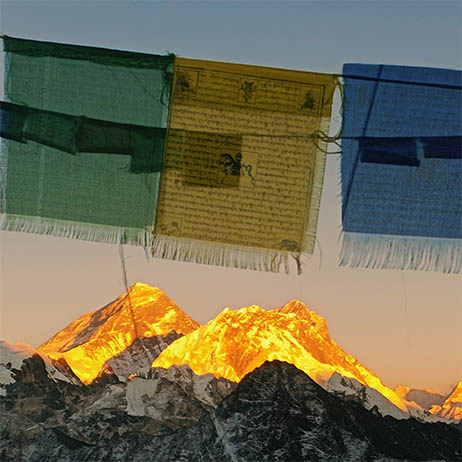Kanchenjunga, the third highest mountain in the world, is a majestic peak located in the eastern region of Nepal. Trekking to Kanchenjunga is a challenging but rewarding experience that takes you through remote villages, beautiful landscapes, and diverse cultures. In this post, we will cover everything you need to know about trekking to Kanchenjunga in Nepal.
01: Overview
02: The Kanchenjunga National Park
03: Are there different climbing and trekking routes available to Kanchenjunga Base Camp?
04: From where does the actual Trekking to Kanchenjunga starts?
05: Relevant information regarding flights and vehicle rentals or travelling to Kanchenjunga
06: Porters and guides for the Kanchenjunga Circuit Trek
07: What are the permits required for Trekking to Kanchenjunga, and how to get them?
08: How difficult is the Kanchenjunga Base Camp Trek?
09: Having the right gear can help you complete the trek!
10: Elevation and acclimatization during the Kanchenjunga Circuit Trek in Nepal
11: How is the temperature and weather when trekking to Kanchenjunga?
12: What does the Kanchenjunga Base Camp Trek Itinerary look like?
13: Sights you'll see while Trekking to Kanchenjunga in Nepal
14: What we suggest you should pay attention to during the Kanchenjunga trek
15: Conclusion
Overview
Kanchenjunga, the mountain known as the world's third highest! Visit Himalaya Treks has been operating treks and expeditions to this region for over a decade. With all our firsthand experience and knowledge we want to share with you, everything you need to know about trekking to Kanchenjunga in Nepal! At a staggering height of 8,586m or 28,169ft, this is also known as Nepal's second-highest mountain.
Did you know that Mt Kanchenjunga in Nepal consists of three peaks? The main, center, and south. Due to its location, and surrounded by four other significant mountains, Kanchenjunga is also referred to as "the Five Treasures of Snow".
The mountain has two major destinations, Kanchenjunga Base Camp (West side of the mountain) located in the far east of Nepal, and reaching the summit by booking the Mt Kanchenjunga Expedition! You could also opt for trekking from Kanchenjunga Base Camp to Makalu Base Camp in a single trek! Both destinations are available with Visit Himalaya Treks.
The Kanchenjunga National Park
Shared between the countries of Nepal, India, and Bhutan, Kanchenjunga's National Park stretches over an area of ±22,000km²/8,494mi²! Mt Kanchenjunga itself stands tall on the western side of the National Park, right on the border of Nepal and India. Blooming with rare and exotic fauna and flora, the Kanchenjunga National Park is a protected ecological site, also frequently visited by research teams!
Learn More about Kanchenjunga Base Camp Trek Nepal
As part of the Himalayas, the Kanchenjunga National Park's climate can change rapidly and surprise you in just a distance of 100km/62 miles. From hot tropical jungles to rocky and barren cold Himalayas the entire park is home to over 1000 different animals. Mammals like the; endangered Snow Leopard, Red Panda, and Blue Sheep can be spotted in the Kanchenjunga National Park! With over 20 different protection zones, the park is considered one of the most important and rare National Parks in the world!
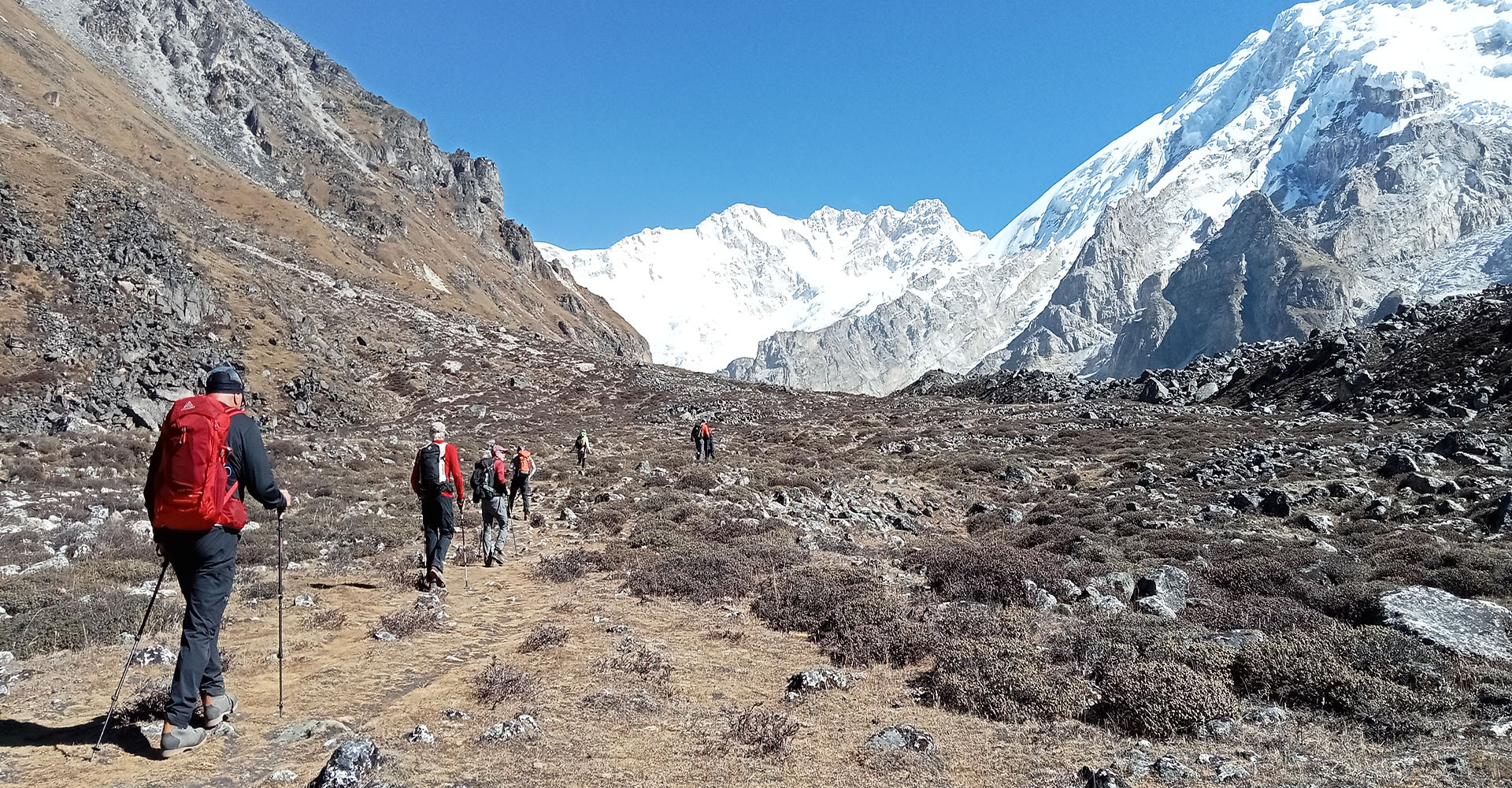
Trekking moving higher Camp to Ramche from Tseram KBC South Base Camp.
Taplejung: Beautiful place you'll walk through while trekking to Kanchenjunga
Taplejung, an area that is gradually developing, is situated between two nations. India's Sikkim district, located to the east of Mt. Kanchenjunga borders this region, while Tibet (China) marks its northern boundary. The Kanchenjunga Conservation Area of Nepal comprises a significant section of this region, which is primarily composed of rock and ice at higher elevations and forests and farmland at lower altitudes. The region's vitality is sustained by three primary river valleys, namely Simbua Khola, Ghunsa, and Tamur, where the majority of the settlements are located.
The trekking paths in the lower elevations of Kanchenjunga are more thrilling and vibrant, while as the trails ascend, they exit the treeline and become rockier and more challenging. To trek in the Kanchenjunga Conservation Area, specific permits are necessary, which you can learn more about in another part of "Everything you need to Know about Trekking to Kanchenjunga."
Are there different climbing and trekking routes available to Kanchenjunga Base Camp?
In actual, there are four distinct routes to reach the Kanchenjunga Base Camp via trekking.
To embark on the Kanchenjunga Circuit Trek, it is essential to identify a safe, exciting, and challenging route. There exist four routes that lead to the various peaks of Mount Kanchenjunga. Three of these routes, namely the South West route, North West route, and North East route, are located in Nepal, making them some of the most popular trekking routes to the mountain. The fourth route, which is situated on the Northeast side of India, is currently prohibited.
Nepal's 26 Days Kanchenjunga Base Camp trek is the most renowned trekking route to Mount Kanchenjunga. This 26-day journey through pristine terrain, away from the mainstream trails, takes you to Kanchenjunga Base Camp North (5,143m/16,873ft), also known as Pang Pema. Additionally, the trail to Kanchenjunga Base Camp North also passes through Kanchenjunga Base Camp South, which is situated at a lower elevation of 4,580m/15,026ft and is locally known as Ramche. Visit Himalaya Treks operates the Kanchenjunga Base Camp trek, which spans 26 days and can be booked promptly. Actual Trekking to Kanchenjunga is of 22 Days starting from Taplejung.
From where does the actual Trekking to Kanchenjunga starts?
As a famous off-the-beaten-path trek in East Nepal, many wonders, where does the actual trekking starts?
Well, in order to reach the Taplejung district you need to travel for two days from Kathmandu! First, you'll want to take a national flight to Bhadrapur located near the Indian border. This is a short flight of about 45 minutes and quite scenic depending on the season.
After arriving at Bhadrapur we take a vehicle to drive for about 3 hours to the beautiful village of Kanyam. Here we get to see incredible views of the tea gardens as well as catch a breathtaking sunset view of Mt Kanchenjunga. As well as in the early morning if you want you can also see the sun rising over the third highest mountain in the world!
Having enjoyed breakfast at Kanyam you'll need to travel north to Taplejungs' province Suketar village from a vehicle. This is where the trekking trail of the Kanchenjunga in Nepal officially starts!
There are other options to reach the starting point of Trekking to Kanchenjunga from Suketar as well. But it is not reliable due to its high rate of flight cancellations.
Based on our experience, this is the most effective way to reach the start of the Kanchenjunga Circuit trekking trail. However, for your reference, we have provided complete information on transportation to Kanchenjunga.
Relevant information regarding flights and vehicle rentals for traveling to Kanchenjunga
We have firsthand experience with the various transportation options available to reach Kanchenjunga, including flying, private driving, and public transportation. Therefore, we would like to provide some useful advice about flight tickets and vehicle hire to Kanchenjunga, based on our own exploration of the best possible options for creating the ideal Kanchenjunga Base Camp trek Itinerary.
Flight ticket to and from Suketar
Possibly the worst airport in Nepal, not regular and unsure flights due to unpredictable weather can even get canceled without notice! We found out that booking a flight ticket to Suketar Airport not only makes it impossible to stick to one itinerary but also causes stress while traveling. Best not to choose this option if you want to make your trek to Kanchenjunga a reality!
Flight ticket from Kathmandu to Bhadrapur
The best option to start your journey to Kanchenjunga Base Camp is by flying from Kathmandu to Bhadrapur. The flight is short, takes only about 45 minutes, and is quite reliable. Every day flights are available starting from 7 am. We found out that taking the early flight is the best as it will allow you to reach Bhadrapur by midday allowing you time to travel further by vehicle to Kanchenjunga.
Public jeep VS Private jeep
After landing in Bhadrapur, you'll need to take a jeep up to reach Suketar, the starting point of the Kanchenjunga Trek. Now there are two options to choose from, you can either hire a sharing jeep also known as a local or public jeep, or hire a private jeep. Depending on your budget we do recommend hiring a private jeep, it will guarantee you good seats, and will stop at locations for some pictures and refreshments. The local jeep of course is cheaper as every seat (It is charged per seat) in the jeep is divided among the passengers.
These are all the available options to reach the starting point of the Kanchenjunga trail. As per our firsthand experience the best route you can take is:
- to take a flight from Kathmandu to Bhadrapur
- then drive on to Kanyam (Better accommodation),
- The next day, take a jeep to Suketar and start your trek.
If you need assistance visit Himalaya Treks is more than happy to arrange all transportation for you and has a dedicated service for the Kanchenjunga Base Camp
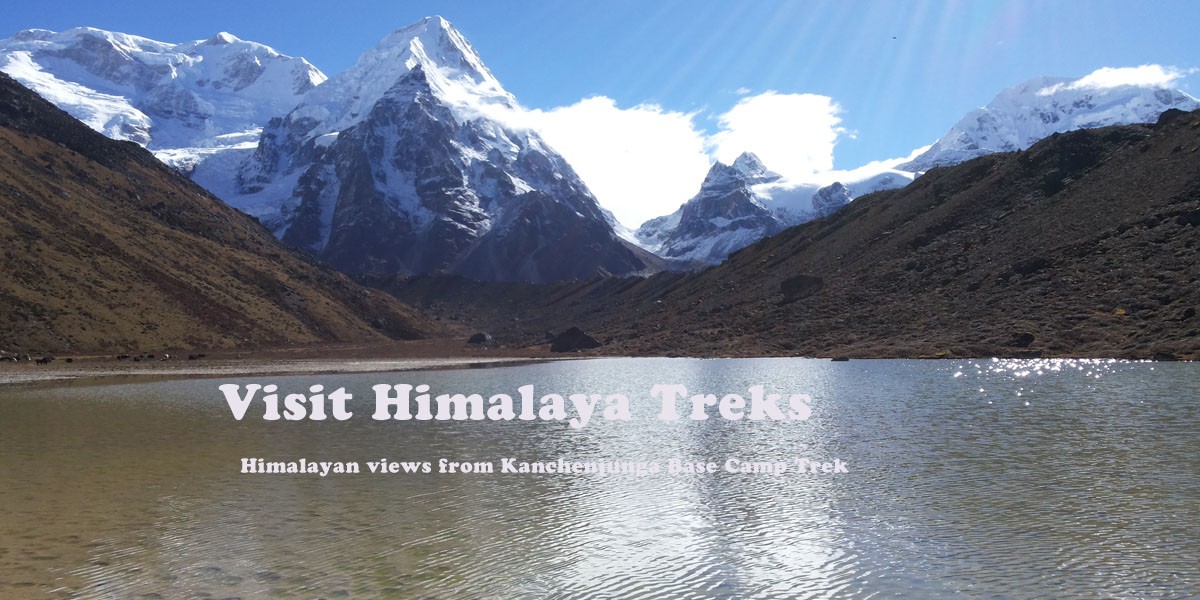
Himalayan Glacier Lake in Ramche, view of Kabru and Rathong mountain KBE South Side of Nepal.
Porters and guides for the Kanchenjunga Circuit Trek
Nowadays more and more adventure seekers look to trek without a guide or porter. Mainly to cut back on the trekking rates, and also to have a bigger adventure. Unfortunately, this leads to many accidents and getting lost in the wilderness! The government of Nepal has made up some new rules in order to provide a better and safer trekking environment in Nepal.
From now on a licensed guide is required for any trek in Nepal including Kanchenjunga Circuit Trek. This provides not only job opportunities for locals but also ensures that every trekker is safe during their adventure.
So what about porters?
Porters are used to carrying cargo up the trekking trails. These mountain supermen can carry up to 20kg/44lbs while going at a steady pace! While not all, there are porters who have taken guiding exams and hold a trekking guide license as well. Porter/guides can also be hired for any trek in Nepal.
As for the Kanchenjunga trek or any other trek to Mt Kanchenjunga, you will have to be accompanied by a government-authorized person. You can either hire a porter/guide or a team of trekking guides and porters depending on your group size.
Do I need to hire a porter or a guide for the Kanchenjunga trek?
No, you do not require to hire a porter, just a guide is sufficient and will let you be able to start the trek to Kanchenjunga.
So why should you hire a porter for Kanchenjunga trekking?
Well, imagine having to carry all your luggage, clothes, and heavy items on a 22-day-long trek! It's far more convenient to hire a porter to carry the heavy loads up the trail. Furthermore, you'll be helping someone out financially while you can enjoy the trek and the incredible views!
Did you know that most guides started as porters? By gaining experience and income, they are able to take a trekking guide exam and earn their license.
What can you expect from a porter in Nepal?
Besides, leading you on the trail porters usually don't speak much English. This also depends on person to person, but you can't expect porters to know every cultural and geographical information about the area. You cannot expect them(porter) to know what to do if you have any emergency situation during the trek. Guides are indeed necessary for your safe Trekking to Kanchenjunga.
You can however expect your porter to be helpful, guide you on the correct trail, and carry a load up to 20 kg/44lbs. Guides on the other hand, unless agreed to don't carry heavy loads. They are there to make sure you get on the correct trail and are well-informed about the local villages, culture, and geography. Their English is basic at a minimum and they make for great conversation partners during the trek! Furthermore, trekking guides have knowledge about emergency rescue and first aid healthcare.
How much should I pay to a porter or guide for the Kanchenjunga Trek in Nepal?
Costs for porters, porter/guide, or professional guides are calculated per day. These costs include their food, accommodation, salary, and insurance. Any trek booked with Visit Himalaya Treks, all come with porter and guide services inclusive of providing the best available service during your trek to Kanchenjunga.
Check out the individual per day rates on how much you should pay to a porter or guide in Nepal for the Kanchenjunga trekking:
- PORTER - 22-25 USD / day
- PORTER/GUIDE - 25-30 USD / day
- PROFESSIONAL GUIDE- 35 – 40 USD /day
The trail to Base Camp of Kanchenjunga is mostly off the beaten path. Carrying a heavy backpack by yourself is just an accident waiting to happen. Don't take any chances, and hire a porter/guide for the Kanchenjunga trek to get the best experience!
What are the permits required for Trekking to Kanchenjunga, and how to get them?
As mentioned above, the Kanchenjunga trekking trail takes place inside the restricted zone of the Kanchenjunga Conservation Area. Hence, you'll need proper documentation or trekking permits for it. So where to get these permits, and how much do they cost?
Kanchenjunga shares an open border with India and Tibet (China), so you can imagine that trekking here can cause immigration services quite a headache… To prevent any issues, for trekking on Nepal's side of Mt Kanchenjunga (where the best trekking trails are available) you'll need to obtain a special trekking permit to enter a restricted zone, as well as an entrance fee to enter the Kanchenjunga National Park. To get a restricted area trekking permit you'll need to apply at the trekking department of the Nepal immigration. We'll explain below what you'll need to bring and how much it will cost for a permit to Kanchenjunga.
Permits and entry fee costs
- Kanchenjunga National Park - 20 USD / person
- Kanchenjunga Restricted Area Permit - 20 USD / week (7 days) per person.
- Trekkers Information Managements System TIMS $20 per person.
For the complete trek, you'll need to calculate a min of 3 weeks - 4 weeks. Also you'll have to bring a few documents with you to apply for a special permit as mentioned below;
- Your original passport with a valid Nepal entry tourist visa
- A copy of your travel insurance.
If all the requirements are met it should take about 2 to 3 hours to get your permits in hand. Do note that during the trekking high seasons in Nepal (spring or fall/autumn) it can take longer!
Don't want to spend half a day on your vacation waiting on some permits?
Book the Kanchenjunga Base Camp trek with Visit Himalaya Treks. While we send you off on a cultural sightseeing tour in Kathmandu, we'll take care of all required permits for the trek!
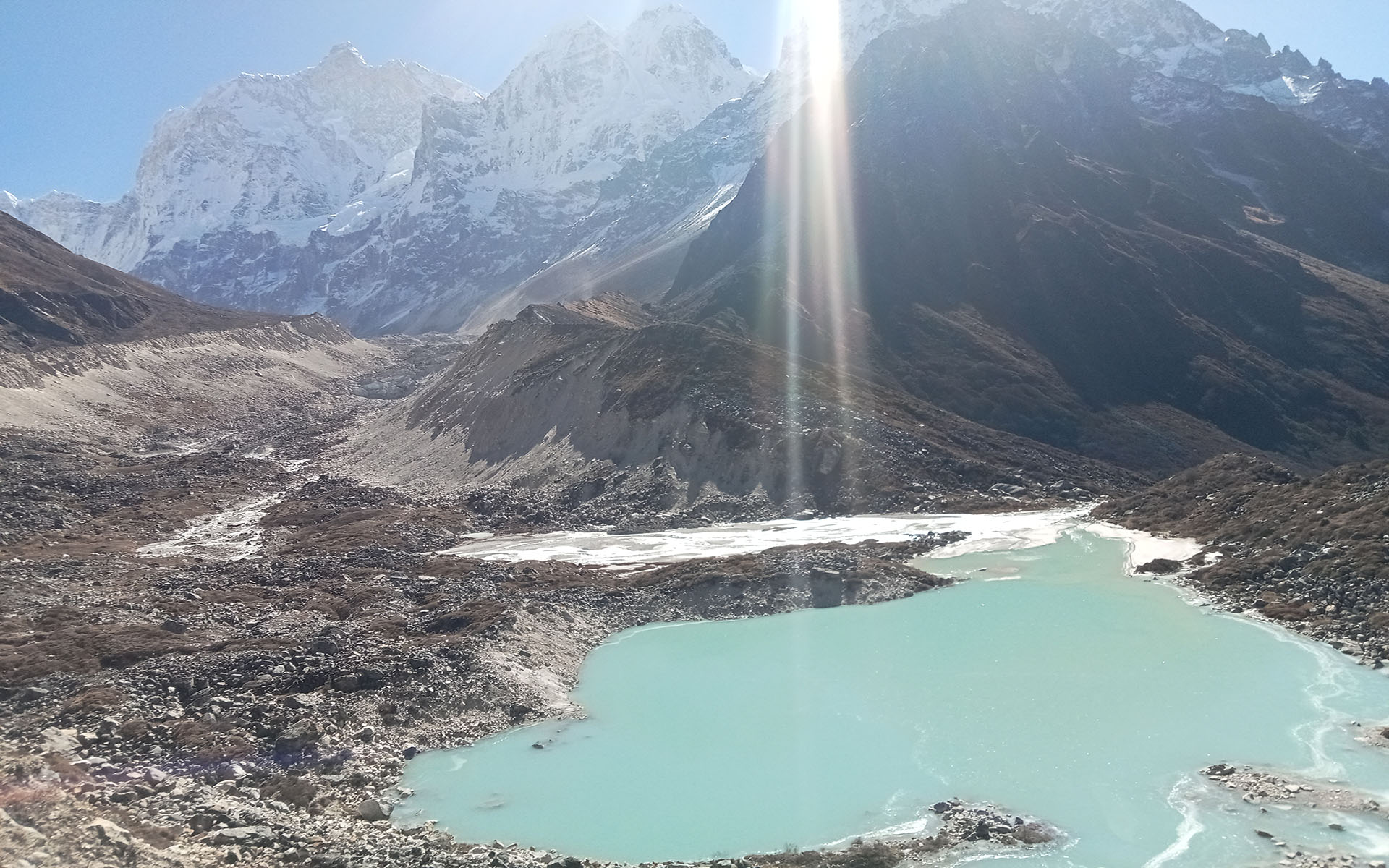
Himalayan Glacier Lake on the way to Janu Himal Base Camp.
How difficult is the Kanchenjunga Base Camp Trek?
Before undergoing a trek, especially in a remote and restricted area, you might want to ask yourself a couple of questions first.
How difficult is it to trek to Kanchenjunga Base Camp in Nepal?
What type of gear do I require for the Kanchenjunga trek?
Should I have a good fitness level or do pre-training before doing a trek to Kanchenjunga?
Or, what about acclimatization and weather during a trekking to Kanchenjunga?
Visit Himalaya Treks provides you with all this information so you can be prepared for this amazing trek to the 3rd highest mountain in the world!
Put yourself on the list of trekkers that successfully completed the Kanchenjunga trek! Be prepared and read this valuable info carefully.
First, you need to understand the average trekking distance of the Kanchenjunga Circuit Trek to get an idea of what to expect. You'll be spending a total of 22 days in the Himalayas trekking with one acclimatization day included. 8 to 14 km or 5 to 9 mi will be trekked taking up to 4 to 8 hours a day. These of course include lunch and tea breaks.
Trekking in the Kanchenjunga region means a lot of ups and downs. One day of a short distance can take longer due to the continuous ascending and descending. Now you don't need to be a professional mountaineer to complete the trekking. But being well prepared can only help you further enjoy the best that the trek has to offer!
How do you prepare for the Kanchenjunga Base Camp trek in Nepal?
Trekking for 22 days in the remote Himalayas is no joke! Be well prepared to fully enjoy the Kanchenjunga trek by preparing your body and mind in advance. You don't need to be a professional athlete or start a gym membership for this.
Visit Himalaya Treks has some simple training suggestions you can do easily from home or nearby for preparation.
The main issue you want to address is general stamina and fitness. You'll be spending each day trekking up and down with your backpack on and off the beaten path. We do recommend doing some jogging, if you have a treadmill you can easily practice fitness from the comfort of your home as well. Another great option is swimming.
This will help improve your breathing capacity as well as train all the muscles in your body.
If you want to go to the gym or have a gym membership we suggest doing the following;
- Squats
- leg presses
- Deadlifts
- wall sits
- and leg curls
Don't forget about your mental health as well. We do find that practicing yoga or meditation helps to prepare you mentally for the trek. If you are new to it, you should try it out!
Having the right gear can help you complete the trek!
Trekking requires the right gear. Having blister-giving hiking boots, no rainproof or windproof jacket, and no extra shoe laces are the things that can break your trek to Kanchenjunga. Having the right gear can help you complete the trek! Visit Himalaya Treks with its many years of experience trekking to Kanchenjunga has made a short list of what we think you should bring and not bring for a trek to Kanchenjunga Base Camp.
What you don't need on the Kanchenjunga trek is expedition or peak climbing gear. There will be high altitudes but no climbing or technical parts.
What not to bring;
- Ice axe
- Climbing shoes with crampons
- Climbing ropes
That being said, there are some trekking gears and equipment you want to bring with you at all costs. These items and clothing can help you make the trek with more comfort and protect you from the elements! As such, you should bring the following;
- Pre-worn hiking boots (we have had many trekkers complaining about blisters while using brand-new boots)
- Sleeping bag and mat
- Down jacket
- Thermal underwear
- A couple of fast-drying hiking pants
- Comfortable hiking socks
- A backpack made for hiking (min. capacity of 50l)
- A spare of extra batteries and an adapter
- Trekking poles (optional)
- Face protection gear (scarf, sunglasses, cap, etc.)
- Extra boot laces
Having these gears and equipment with you during the trek you'll be a lot more comfortable while making your way to Kanchenjunga Base Camp! At Kathmandu's Thamel area (the main touristic area of Kathmandu) you can find numerous trekking gear shops selling and sometimes renting out gear. Don't forget to bring water-purifying tablets or a LifeStraw as well!
Test your clothing and gear before leaving for Nepal!
Just buying your gear at the last minute won't do you any good! Imagine departing for the trek and you realize that your jacket doesn't close properly, or that the hiking boots you just purchased give blisters! It's a nightmare waiting to come true. We highly recommend checking and if possible testing all your gear before leaving for Nepal or at least before departing for the trek to Kanchenjunga.
If you are new to trekking and are unsure what type of size boots you require or will be best for hiking and trekking. Then we suggest you buy a 0.5 or 1 size larger, you need to keep some room for thick hiking socks. Furthermore, we recommend getting ankle-high boots and woolen hiking socks.
Being well prepared, you are ready for the amazing trek to Kanchenjunga Base Camp in Nepal! If you do require any help with renting or buying trekking gear in Nepal, then Visit Himalaya Treks can assist you upon request.
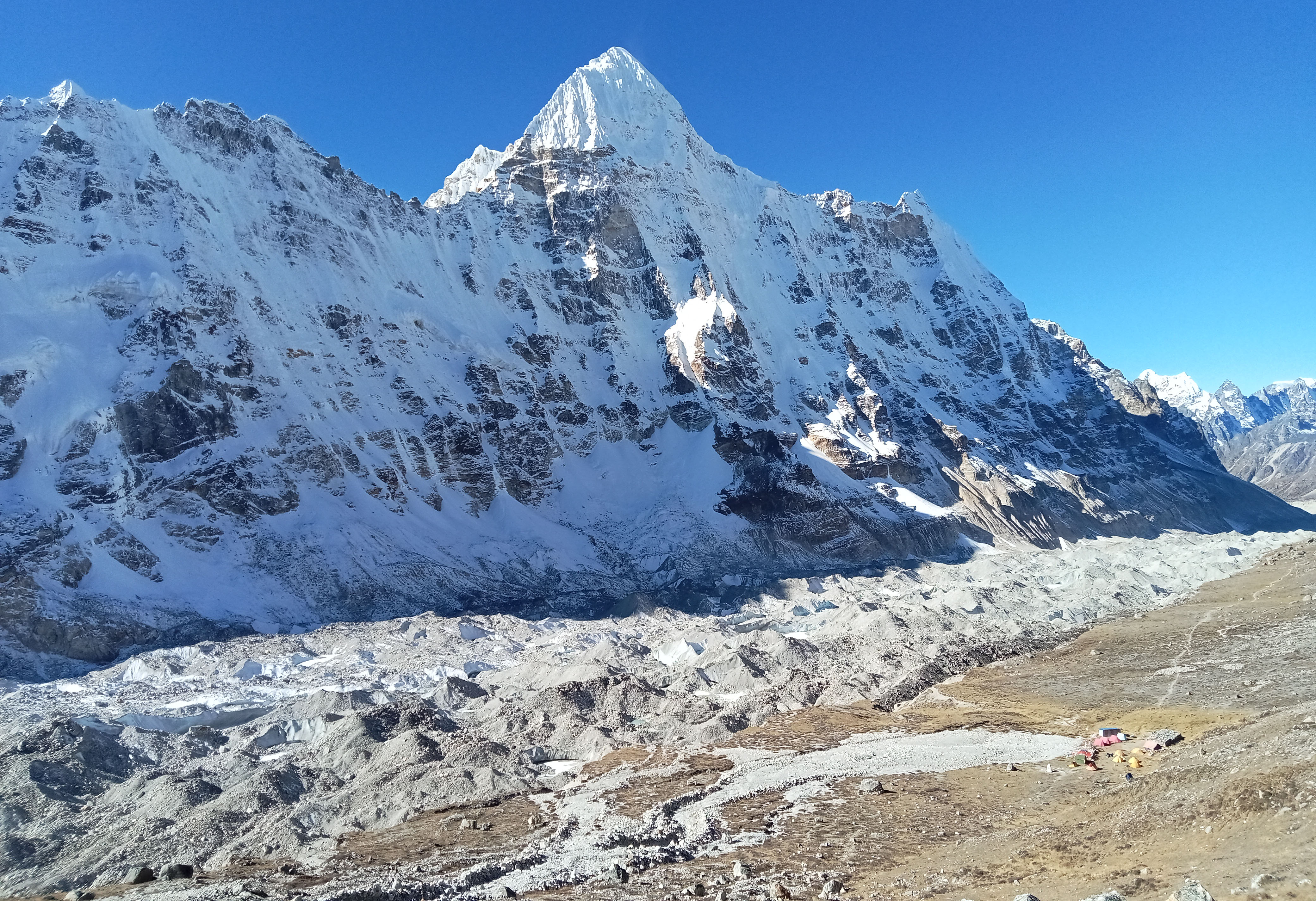
Kanchenjunga North Glacier and Gimmigela Peak 6415 meters view from Above Pang Pema.
Elevation and acclimatization during the Kanchenjunga Circuit Trek in Nepal
Reaching the starting point of the Kanchenjunga Circuit Trek at an altitude of 1,400m/4700 ft (Taplejung village), the oxygen levels are still ok. As you ascend to higher altitudes, the availability of oxygen decreases. Therefore, if you are from a country located at sea level, your body will need to acclimate to the lower levels of oxygen.
No matter your muscles or stamina the body can't function properly without its normal intake of oxygen! The danger lies in gaining too much altitude too quickly. Your body needs time to adjust to the new oxygen levels. Acute Mountain Syndrome is a common affliction for those not properly acclimatizing.
During the Kanchenjunga Base Camp trek in Nepal, you'll be trekking for about 6 to 8 hours a day and reach a daily elevation of about 500m. In comparison to the popular Everest Base Camp trek in Nepal, this trek is relatively safer. Altitudes are gained gradually giving you time to properly acclimatize. To be on the safe side Visit Himalaya Treks does hold a separate day for acclimatization during the trek.
How is the temperature and weather when trekking to Kanchenjunga?
As with all treks in Nepal, the best time of the year to do the Kanchenjunga Base Camp trek is either during the months of March to May or October to late December. Also called the spring and fall/autumn seasons in Nepal, during these months you can expect the best weather, temperature, and views with clear skies! Temperature differs depending on which time of year you are planning to trek to Kanchenjunga.
During the spring at Taplejung (the entry point to Kanchenjunga Nepal's side) you can expect temperatures of 10° to 20°C or 50° to 68°F. While at the higher elevations or Kanchenjunga's Northern Base Camp, it gets a lot colder fast! Up top temperatures can drop drastically to -12°C or 10°F. Up high and at the mountain passes winds rip at 13 to 16km/h or 8 to 10mph. To get an exact forecast of the area we recommend checking out the Nepal government's official weather website at: http://mfd.gov.np/weather.
It is important to be prepared for a warmer climate in the lowlands and a cold to freezing climate at the top. Wear good protective clothes when you cross the mountain passes and visit the Base Camps South and North! The weather and temperature in the Himalayas are never constant and besides the Dhaulagiri Circuit trek in Nepal, the Kanchenjunga trek has the most unpredictable weather forecasts.
What does the Itinerary of the Kanchenjunga Base Camp trek look like?
Having all the crucial information about trekking to Kanchenjunga, you might wonder. How does the itinerary of the Kanchenjunga Base Camp trek look like? With its enormous size, the Kanchenjunga Conservation Area has many paths and trails on and off the beaten path. Multiple Base Camps, mountain passes, viewpoints, and small settlements with guesthouses or teahouses spread around the area. You'll find slightly different itineraries online, but here is Visit Himalaya Treks's best itinerary for the Kanchenjunga Base Camp trek:
The best itinerary for the Kanchenjunga Base Camp South and North in Nepal:
Day 01: Arrive in Kathmandu
Day 02: Sightseeing + trek preparation
Day 03: Fly to Bhadrapur + drive to Kanyam
Day 04: Drive to Taplejung /Suketar (2,000m/6,562ft) + trek to Lali Kharkha (2,265m/7,431ft)
Day 05: Trek to Kade Banjyang (2,130m/6,988ft)
Day 06: Trek to Phumphe Danda (1,858m/6,096ft)
Day 07: Trek to Sherpaguan (1,678m/5,505ft)
Day 08: Trek to Torongton (2,995m/9,826)
Day 09: Trek to Tseram (3,870m/12,697ft)
Day 10: Acclimatization day at Tseram
Day 11: Trek to Ramche (4,615m/15,141ft)
Day 12: Trek to Oktang South Base Camp (4,730m/15,518ft) + back to Tseram (3,870m/12,697ft)
Day 13: Trek to Sele La (4,290m/14,075ft)
Day 14: Trek to Ghunsa (3,475m/11,401ft)
Day 15: Trek to Kambachen (4,225m/13,862ft)
Day 16: Side trip to Janu Himal Base Camp (4,500m/14,764ft)
Day 17: Trek to Lhonak (4,815m/15,797ft)
Day 18: Trek to Pang Pema (5,150m/16,896ft)
Day 19: Day hike to Domo Ri Peak (5,600m/18,373ft) + back to Lhonak (4,815m/15,797ft)
Day 20: Trek back to Ghunsa (3,475m/11,401ft)
Day 21: Trek back to Gyabla (2,725m/8,940ft)
Day 22: Trek to Amjilosa (2,510m/8,235ft)
Day 23: Trek to Ranipul (1,550m/5,085ft) + drive back to Taplejung
Day 24: Drive back to Kanyam's tea garden
Day 25: Drive back to Bhadrapur + fly back to Kathmandu
Day 26: Departure
Why VHT offers the Best Itinerary for Kanchenjunga Base Camp Trek?
While the actual trekking part of the Kanchenjunga north trek takes 22 days with one acclimatization day at Tseram included, we offer a complete package of 26 days in Nepal. While we take care of your permits, you enjoy a cultural sightseeing tour of Kathmandu's most famous landmarks. Transport is all included as per the itinerary, and we take you also to the famous tea gardens of Ilam at Kanyam village as well.
This Kanchenjunga Base Camp trek itinerary is carefully designed keeping in mind to head back to lower elevations for acclimatization without wasting extra days, as well as making side trips to popular viewpoints. You can also request a tailor-made or different itinerary for the Kanchenjunga trek in Nepal with us. Over the last couple of years, the advertisement sector has given rise to the popularity of treks in Nepal globally, you can check this article which talks about ads in Nepal and has been a major contributing factor to the rising popularity of treks globally.
Sights you'll see while Trekking to Kanchenjunga Base Camp in Nepal
Describing the trek to Kanchenjunga North Base Camp in short. First, you'll have to travel to Nepal's most eastern part, Taplejung. From here the trekking trail starts and leads first to Kanchenjunga's south Base Camp at Oktang (4,730m/15,518ft). The trail starts off in the lower hills and heads gradually up towards Mt Kanchenjunga.
South Base Camp Trekking to Kanchenjunga
At the South Base Camp of Mt Kanchenjunga, you can check out the first highlighted viewpoint and see incredible mountain views of; the Kanchenjunga Mountain Range, the Kabru Mountain Range, Mt Janu Himal also known as Mt Kumbakana (7,710m/25,295ft), Mt Rathong (6,678m/21,910ft), and Mt Kokthang (6,148m/20,171ft).
This concludes the first part of the Kanchenjunga Base Camp trek. For the second and perhaps most strenuous part, a series of mountain passes leads you from the south side to Mt Kanchenjunga's north side and Base Camp.
North Base Camp Trekking to Kanchenjunga
In particular, the Sele La Pass (4,290m/14,075ft) which leads to one of the highest villages of the Kanchenjunga trek, Ghunsa (3,475m/11,401ft)! This is also one of the biggest Tibetan Buddhist villages of the entire Kanchenjunga Conservation's upper area. Pang Pema or Kanchenjunga's northern Base Camp is just three days away from here. But an extra day lets you visit Juna Himal Base Camp (4,500m/14,764ft).
This will also help you further acclimatize and give you some unique views during the Kanchenjunga Base Camp trek with Visit Himalaya Treks. Once at Pang Pema, you can check out incredible Himalayan views. These include; Mt Kanchenjunga (8,586m/), Mt Kangbachen (7,903m/), the Ramtang Peak (6,601 m/), the Taple Sikhar Peak (6,341m/), the Nepal Chuli (6,910m/) and the Kirat Chuli (7,365m/)! From here the trek makes its way back to Taplejung.
See at least 8 above 6,000m/19,685ft Himalayan Mountains and peaks during the Kanchenjunga North Base Camp trek in Nepal with Visit Himalaya Treks! Overnight in traditional Himalayan settlements, see a wide diversity in fauna and flora, and trek through the Kanchenjunga Conservation Area to the third highest mountain in the world Mt Kanchenjunga!
What we suggest you should pay attention to during the Kanchenjunga Base Camp trek
Don't be nervous, we have noticed that nervous trekkers quickly take a wrong step and sprain an ankle!
Always stay hydrated but be mindful of the environment, and try to avoid plastic bottle usage.
Make sure to bring water purification equipment such as a LifeStraw.
During the trek, you'll come across many pack caravans of yaks, etc. Always give space to them!
Meat is available during the trek, but be aware as up high we can't guarantee the freshness. We suggest eating vegetarian in the higher settlements unless fresh meat is available.
It's a good thing to bring some extra energy-giving or calorie-packed snack bars with you.
Try not to consume any alcohol, tobacco, or any type of drugs during the trek.
Bring your own personal first aid kit, you might not find the brand of medicine you are used to in Nepal!
At the higher altitudes we recommend not to sleep or rest during the day, rather remain active and try to explore around it will help with your acclimatization.
Take these suggestions for the Kanchenjunga Base Camp trek with you, it will be helpful during the trek as well as for your preparation!
Conclusion
Take part in one of the best off-the-beaten-path treks in Nepal. With this article of everything you need to know about trekking to Kanchenjunga Base Camp, you'll be ready to explore around the third-highest mountain in the world! Every year a number of trekkers head on the Kanchenjunga Base Camp trail and have the adventure of a lifetime. Now you can also, book this trek with Visit Himalaya Treks and we'll guide you there with a full service!
